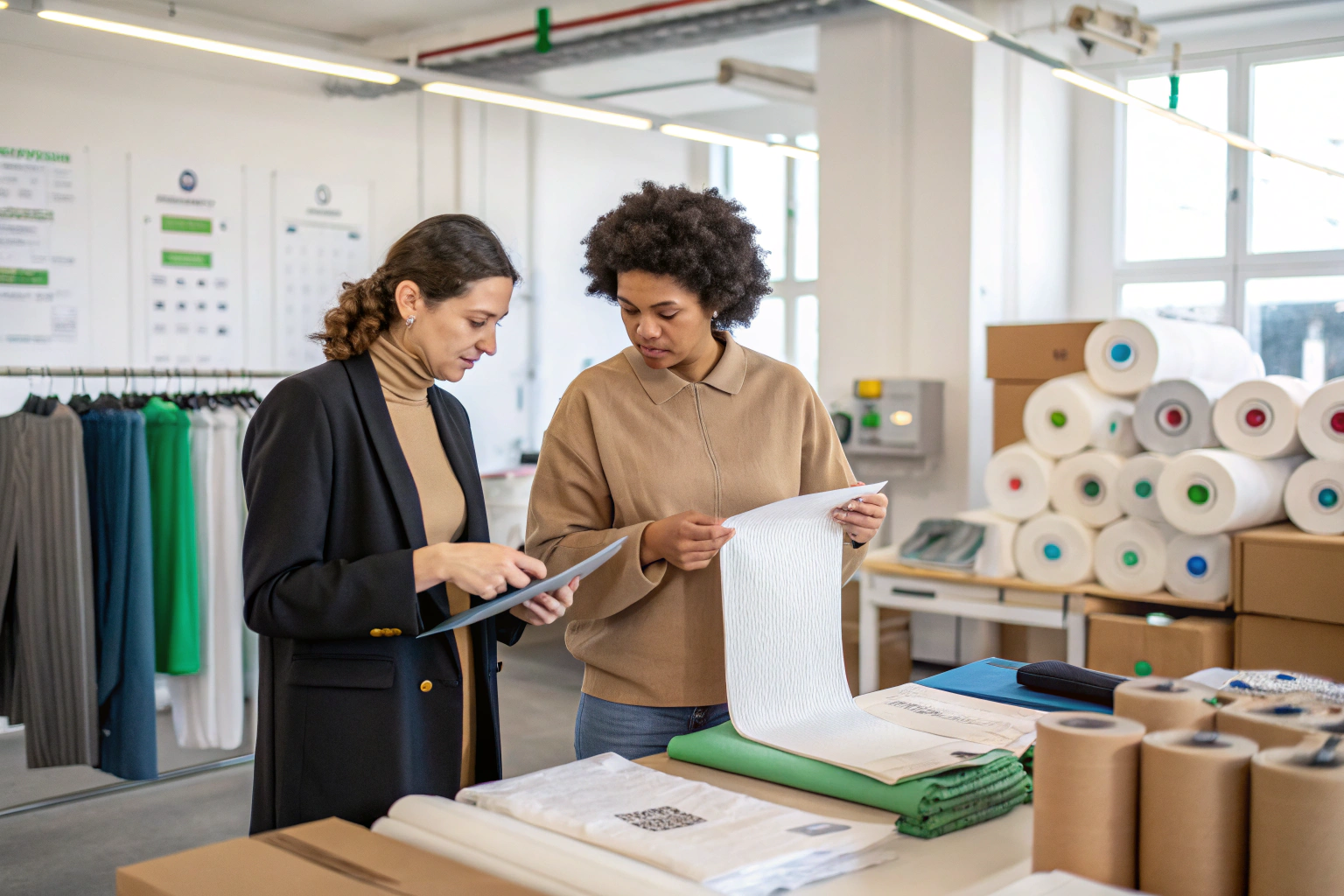In the fast-evolving world of sustainable fashion, many forward-thinking brands are asking—how can we design for circularity without compromising on quality, feel, or functionality? Compostable fabrics like PLA (Polylactic Acid) have emerged as powerful allies in the global shift toward zero-waste and biodegradable clothing. But for buyers sourcing from Asia—especially from trusted textile hubs like Keqiao, China—getting access to verified, high-performance PLA textiles at scale can feel like navigating a maze.
Polylactic Acid fabric, derived from renewable plant starches like corn or sugarcane, is a biodegradable and compostable textile engineered for the circular economy. It offers breathability, antibacterial properties, and composts fully under industrial conditions—making it ideal for brands committed to reducing landfill waste and microplastic pollution.
Sourcing compostable PLA fabric requires more than just finding a supplier on a marketplace. Brands need assurance on fiber authenticity, third-party certifications, performance metrics, and end-of-life handling. As the founder of Fumao Fabric, I’ve helped over 500 eco-driven fashion brands across the US and EU build product lines with compostable and recycled textiles. In this article, I’ll break down the process into actionable sourcing strategies.
What Is PLA Fabric and Why Is It Compostable?
PLA (Polylactic Acid) fabric is a bio-based textile made from fermented plant starch, most commonly from corn or sugarcane. This fabric offers a soft feel similar to polyester but without the harmful fossil-fuel base. What makes PLA stand out in sustainable fashion is its ability to break down into natural elements under industrial composting conditions, usually within 90–180 days.
PLA fabrics are compostable because they’re built on lactic acid chains that bacteria and enzymes can digest in commercial compost systems, leaving behind only carbon dioxide, water, and biomass.
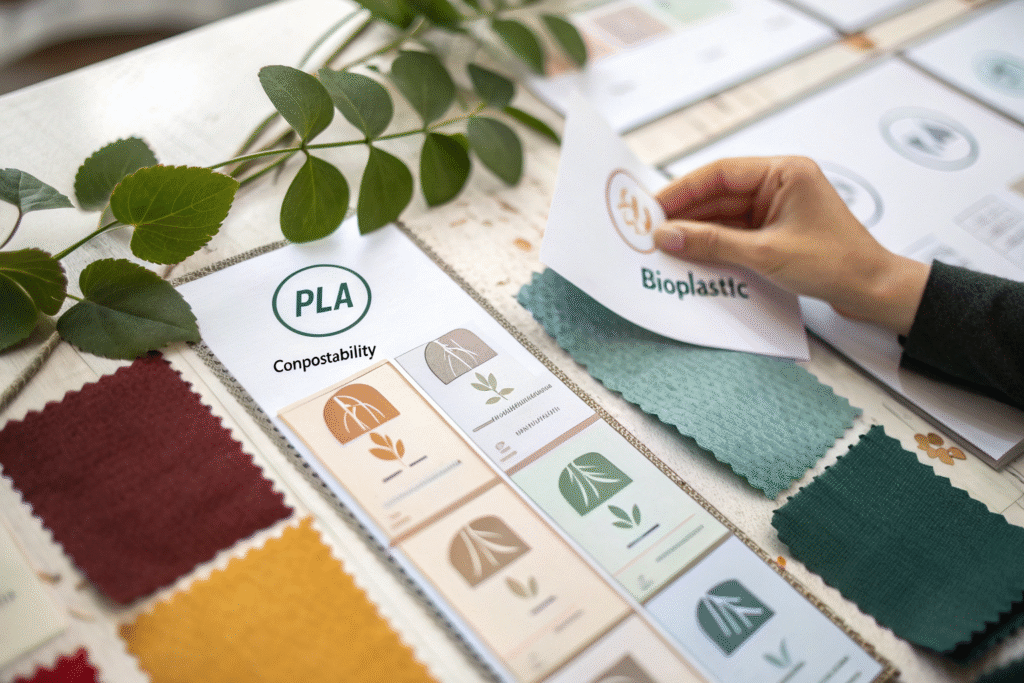
What Are the Key Technical Properties of PLA Fabric?
Compared to petroleum-based synthetics, PLA fabric is:
| Property | PLA Fabric | Polyester |
|---|---|---|
| Base Material | Corn starch | Crude oil |
| Decomposability | Compostable (industrial) | Non-biodegradable |
| Hand Feel | Soft, smooth | Varies |
| Odor Resistance | Moderate | High |
| Moisture Wicking | Good | Excellent |
| UV Resistance | Moderate | Good |
PLA’s natural origin, compostability, and low greenhouse gas emission during production make it ideal for T-shirts, linings, innerwear, and even soft home furnishings. Many brands integrating circular textile design now favor it over synthetic blends.
How Is Compostability Verified in PLA Fabrics?
For buyers like Ron in the U.S., it’s crucial to source PLA fabrics with third-party certifications. Look for global standards such as:
- EN 13432 (EU) – Compostability certification for packaging and materials
- ASTM D6400 (USA) – Indicates materials that degrade in municipal composting
- TÜV Austria OK Compost – Ensures industrial composting compliance
We at Fumao Fabric routinely work with labs like SGS and Intertek to validate that our PLA yarns and coatings meet the necessary global benchmarks.
What Are the Challenges When Sourcing PLA Fabric?
PLA fabric is not as widely produced as conventional polyester, meaning buyers may face supply chain limitations, higher costs, and inconsistent quality between suppliers. Additionally, many so-called “eco” PLA blends on the market may contain fossil-fuel additives that compromise compostability.
The biggest challenge is verifying the authenticity and purity of PLA materials—especially when sourcing at scale.
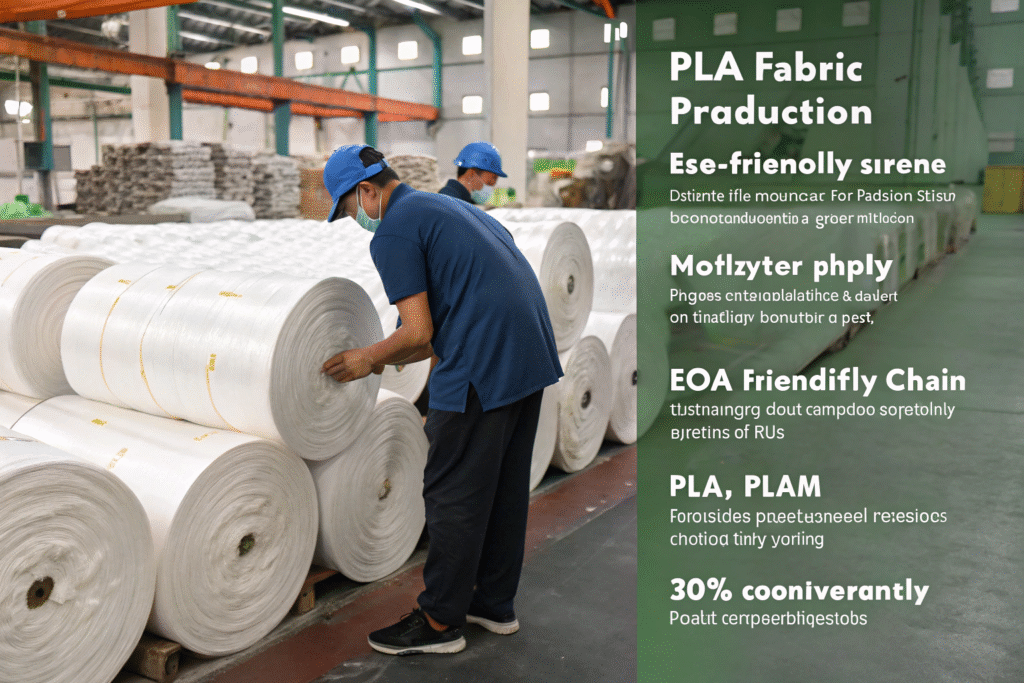
Why Is Quality Control Critical for Compostable Fabrics?
Because PLA degrades under heat and moisture, poor processing can weaken its structure. As buyers, you must work with partners who apply strict quality checks at every stage—spinning, dyeing, finishing, and storage.
At Fumao Fabric, we use our CNAS-certified lab to conduct shrinkage, fiber content, and microbial decomposition tests. Our fabrics have maintained a 98% pass rate with European clients under REACH and OEKO-TEX standards.
What MOQ and Lead Times Should I Expect for PLA Fabric?
Typically, PLA fabric orders come with:
- MOQ: 800–1000 meters per color/design
- Lead Time: 18–25 days (woven), 12–15 days (knit)
- Sampling: Lab dips in 48–72 hours
- Custom Finishes: Moisture-wicking, antibacterial, or digital prints may extend lead time
To support startups and boutique brands, we also offer small-batch PLA development from 300 meters via select stock yarns. For buyers planning a circular capsule line, this flexibility helps lower entry risk.
How to Verify PLA Suppliers and Certifications in China?
Choosing a verified supplier is critical when sourcing compostable fabrics. While platforms like Alibaba offer volume, the risk of greenwashing is high. Not every supplier claiming “PLA fabric” can produce lab-backed compostable textiles.
Always request a full tech pack with fiber breakdown, dye process notes, and test results.
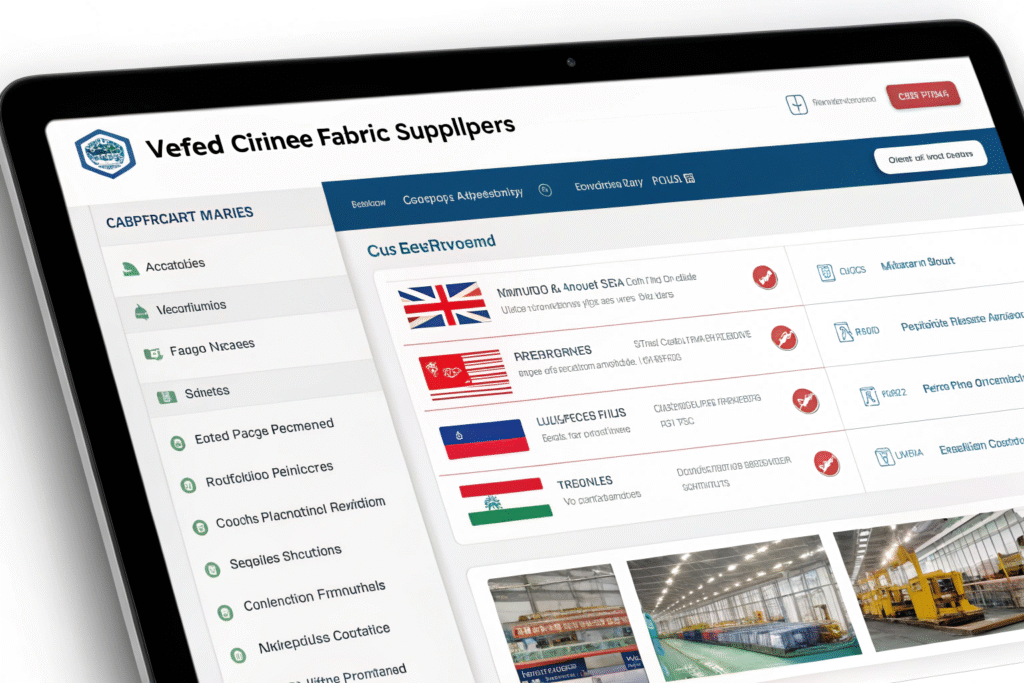
What Documents Should a Trustworthy Supplier Provide?
When qualifying a PLA fabric manufacturer, ask for:
- PLA polymer source confirmation (e.g., from NatureWorks Ingeo or Total Corbion)
- EN 13432 / ASTM D6400 certificates
- Lab test reports for biodegradability and safety
- Declaration of fiber percentages (if blended)
- Shipping documents listing HS code 5505 or 5402
We provide a QR-coded batch tracker that shows compostability test logs, production time, and fiber sourcing per PO—available on all exports from our Keqiao warehouse.
How Do I Protect My IP and Order Integrity?
Before placing orders, use NDA contracts and OEM agreements to prevent supplier-side replication. We also support custom embossing, woven logo tapes, and order-specific Pantone locks to prevent design leaks and cross-factory mixing.
What Are the Best Applications of PLA in Circular Fashion?
Compostable PLA fabric is gaining traction in categories like activewear, underwear, children’s clothing, and eco-homeware. Its plant-based origins appeal strongly to Gen Z and millennial buyers in the U.S., Europe, and Japan.
More brands are choosing PLA for styles where both comfort and biodegradability matter.
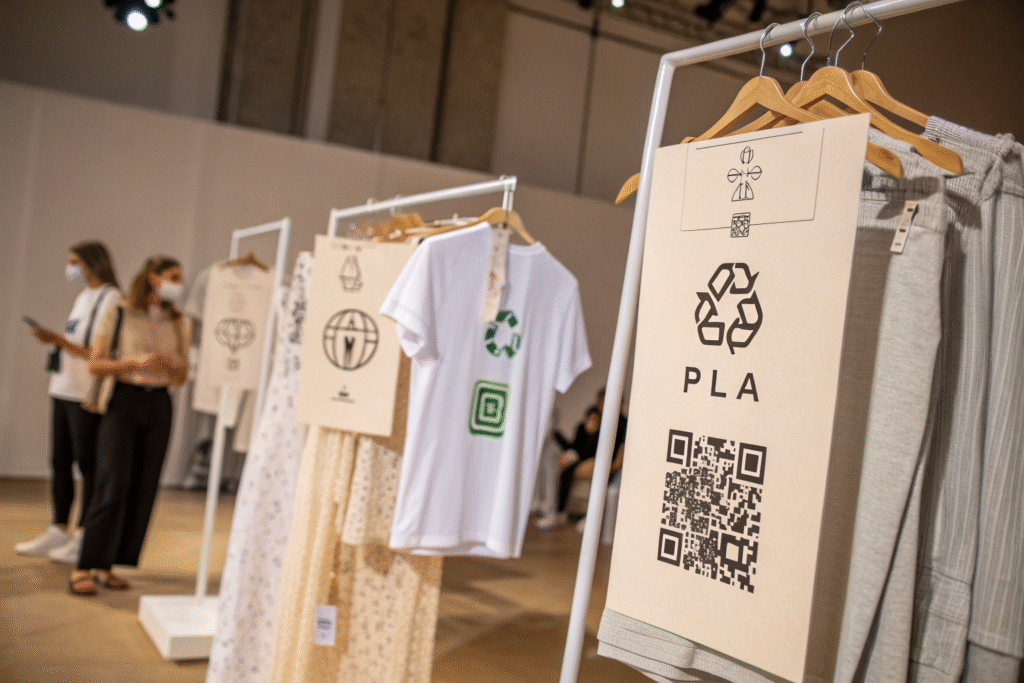
Which Fashion Categories Use PLA Most Effectively?
| Application | Reason |
|---|---|
| Activewear Linings | Breathable, odor-neutralizing |
| Baby Onesies | Soft, compostable, safe |
| Loungewear | Smooth texture, light drape |
| Packaging Wrap | Printable and compostable |
| Shoe Innersoles | Flexible and bio-based |
Innovative brands like Pangaia and Allbirds already explore bio-based blends, including PLA, for lightweight, low-carbon wardrobe essentials.
Can PLA Replace Polyester in All Use Cases?
Not entirely. PLA still has lower heat resistance than polyester, making it unsuitable for ironed formalwear or hot-wash garments. However, when blended with Tencel™ or recycled cotton, PLA fabric offers increased strength and drape. We’ve co-developed such blends with buyers targeting eco-loungewear lines in California and London.
Conclusion
Sourcing compostable PLA fabric is a forward-thinking choice for brands aiming to align with circular economy goals, reduce synthetic waste, and cater to eco-aware consumers. However, success depends on vetting the right supplier, verifying material authenticity, ensuring quality consistency, and optimizing application-fit.
At Fumao Fabric, we support circular fashion labels with verified compostable fabrics, small-batch production, and end-to-end customization. Whether you're creating a limited drop or scaling a new eco-line, our team ensures your materials align with your values and performance expectations.
If you're planning to incorporate PLA fabric into your next sustainable apparel collection, contact our Business Director Elaine at elaine@fumaoclothing.com. We’ll help you design, source, and ship your garments seamlessly—from yarn to door.

